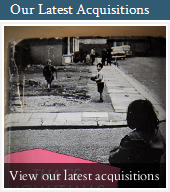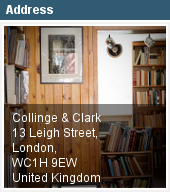SEIZE THE MONKEY
Written by the knowing
for those in the know, this newsletter avoids being a tip sheet for the private
press world, but does I’m afraid occasionally rasp the odd nerve. Famously or,
depending upon your point of view, infamously, this was especially so with the
last issue With or Without Oxford ,
where retractions were demanded and it was suggested that were I not to put the
mush back into my mouth dire things might happen. However this very brief issue
is written with a view to postponing all-out war – if only by happily waving a sheet of
handmade and shouting about joyful things.
Types/Paper/Print is a new twenty-four page type specimen book from
Rollin Milroy’s Heavenly Monkey press in Vancouver. It displays nine roman and
eleven italic faces in various sizes printed on Guarro paper, with an
‘allusive’ wood engraving cut and printed on gampi by Shinsuke Minegishi.
Each face is displayed on a full page (31 X
21cm) in three text sizes. There is a three- page foreword written by Rollin,
discussing why these faces have been chosen, and how they will be used (and printed)
at the studio. The foreword also touches on the importance of paper and how it
can affect the appearance of type. (The ten special copies, now fully
subscribed, illustrated this point by having all of the samples printed on
three different papers – including Arches Wove and Reg Lissel’s handmade, all
damp, bound together sequentially for comparison’s sake.)
Binding for the ten specials is quarter
leather by Claudia Cohen, for the forty standard copies combed marbled paper
over boards, predominantly blue, white and maroon, gilt-titled white labels on the spine and
upper board – that on the front cover being in the shape of a small diamond –
it sits on these eighteenth-century style boards just so.
The text used to display the types is H.P.
Lovecraft’s story The Horror at Red Hook,
though it is hardly announced anywhere that this type specimen is also a
story. The title-page (in grey, black and reddish-brown) seems to me enjoyably
perfect. It is beautifully printed and laid out, but there is a touch of humour
in what seems to be a reference to Eric Gill’s Typography as well.
This is really so
wonderfully good, that I find myself wanting to carp and I have tried to be
critical. Rollin has privately confessed to a small error in the Foreword and
Shinsuke Minegishi’s wood engraving Mr
Milroy’s Gate to a Wonder World is not on an integral leaf, being a late
addition, but these are very small imperfections. On the other hand, what may
surprise people is that this is a polymer not a metal production. Obviously, it
is polymer printed on the hand press – choosing to work with digital type as if
it was metal – with all the automated features turned off.
A single copy of Types/Paper/Print is in the shop and it
may be viewed until 21st May. I am also taking orders at £320 per
copy, although it is most unlikely that all orders can be fulfilled. Overall
score 39
Rather different is
Out of Context , is a small
but good thing from Miles Wigfield’s Reading Room Press. It has twelve pages,
printed wrappers, sewn, printed in blue in Bembo on the Albion on Magnani with
ornaments by Edward Bawden. Approximately 140 copies at £15
There is almost as much colophon as text,
which simply quotes T.E.Lawrence: ‘There need be no proof reading since
misprints are a matter of indifference.’ This is preceded by a wood-engraved
portrait of TEL by George Buday done from the original block. In point of fact,
Lawrence was most particular about misprints, what this refers to is the U.S.
copyright edition of Seven Pillars of
Wisdom by Doran. This edition was to be so severely limited and so expensive
that it would be neither bought nor, more relevantly, read. Overall score 34
Whilst only the total
score is given beside each book, each book is marked out of a possible fifty
points, obtained thus: Paper (maximum of 5 points), Typography &
Illustration (maximum of 15 points), Binding (10 points), Value for money (10
points), Content/Gut feeling/Was this book worth producing? (10 points)
Under this system which
I’ve used for many years in assessing new books brought into the shop, 20 to 30
is the average, 35 very good indeed, under 18 not good.
I’ve not yet received a copy of the Incline Press E.R.Weiss book by Gerry Cinamon, which I’ve
been eagerly awaiting for quite some time (rumour has it that copies are at the
binders). Expectations run very high after so long. Incline Press has never
liked doing ‘specials’, but I understand that Graham Moss has agreed to the
demand for some.
Bob Baris at the Press on Scroll Road has kindly sent
me a prospectus for No Fool, No Fun: New
Poems by Gray Zeltz , illustrated with wood-engravings by Wesley Bates. It
looks excellent. Subscribers may recall how impressed with Bob’s work I was at
Oxford 2011. I shall be stocking all his other available work in the near
future.
Finally, it has been a delight to be once again in
touch with Carolee Campbell of Ninja Press, Sherman Oaks, California, and I will
again soon be showing her extraordinary vital and creative books. Her Press was founded in 1984 and named after
its first black cat. In a letter she wrote to me some fifteen years ago she
explained something of her approach to bookmaking: ‘Going to the ... Book Fair is like going back in time. The work of
most of the presses there is so very good yet somewhat hidebound – stuck in
amber. The tradition of woodblock printing is a long and glorious on with many
fine examples, a number of them evident at the fair. As a contemporary
bookmaker I have one foot in the technology of the past ... and the other foot
planted firmly in an approach to bookmaking that articulates my three-dimensional
“voice”, my personal experience of the literature I choose to print. I
challenge myself to bring the history of bookmaking and its techniques into my
bindings in new configurations to match the writing which newly configures
literary expression. Otherwise we reinvent the wheel.’
I’m particularly keen on Nathaniel Tarn’s The Persephones (as I was previously of her edition of
Tarn’s The Architextures ). The text pages consist of
12 unbound folios opening to 14 x 18 inches. Each folio is painted by hand on
both front & back using sumi ink & salt by her making each copy unique.
The poems are printed on and alongside the artwork. The folios are held in
a goat parchment cover. The edition is comprised of 85 numbered copies, signed
by both poet & artist, with an additional 10 lettered hors commerce.48 pages.
£1,100
Also produced by
her is The
Sirens, by New Zealand poet Alan Loney Hand set in Eve and Paramount printed on gampi
torinoko, handmade by the late Masao Seki on Shikoku Island, Japan. The
decorative device repeated throughout the text is embellished by hand with gold
and silver pigments, as is the titling. The text is sewn through the black
Asahi cloth spine with gray silk cord echoing the silver embellishments. The
boards are covered in hanji, handmade at the Jang Ji Bang papermill in
Gapyeong, Korea. No two sheets are alike in their coarsely stained beauty.. Design
and execution are by Carolee Campbell whose photographs line both front and
back boards. There are 80 signed and numbered copies in the edition 28 pages.
£300





